Imagine an agricultural system that requires no chemical or costly external inputs yet produces various products from fruits, nuts, vegetables, and medicinal herbs. Sounds good? Welcome to Zero Budget Natural Farming.
It can be a challenge to get information about Zero Budget Natural Farming if you are just starting out. However, don’t let that discourage you.
The actual ZBNF model isn’t that complicated. We created this guide with complete beginners in mind. We intend for it to be a valuable resource in your research.
Here is everything you will learn:
- What is Zero Budget Natural Farming? (ZBNF)
- Who Introduced Zero Budget Natural Farming?
- What Are The Four Pillars Of Natural Farming?
- Difference Between Organic Farming And Zero Budget Natural Farming
- What Are The Advantages Of Zero Budget Natural Farming?
- What Are The Disadvantages Of Zero Budget Natural Farming?
- How To Start Zero Budget Natural Farming
- Can We Use Bio Fertilizer In Zero Budget Natural Farming?
- Pest Control In Zero Budget Natural Farming Systems
Let’s get started!
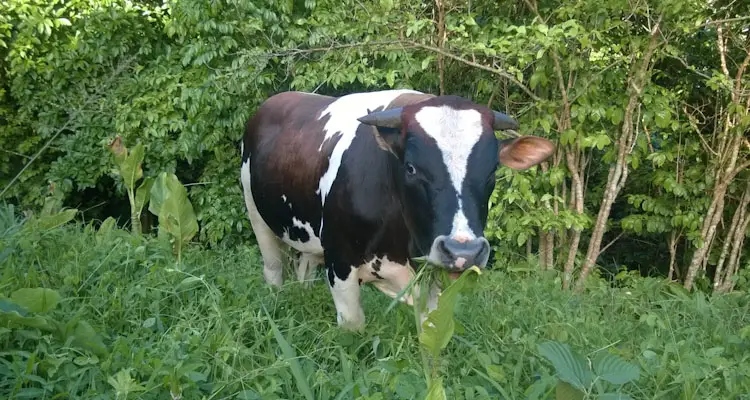
What is Zero Budget Natural Farming? (ZBNF)
The name Zero Budget Natural Farming can be a bit misleading. As a result, it is crucial to understand what the system entails.
Zero Budget Natural Farming, ZBNF for short, combines traditional farming and Agroforestry practices. It was designed as a cost-efficient method to maximize the yields of small farm holdings. It uses local materials to make agricultural amendments instead of costly chemical inputs such as pesticides and fertilizers.
Contrary to popular belief, “zero budget” does not mean “zero cost.” The farmer still has to purchase land, equipment, and other essential materials in most instances.
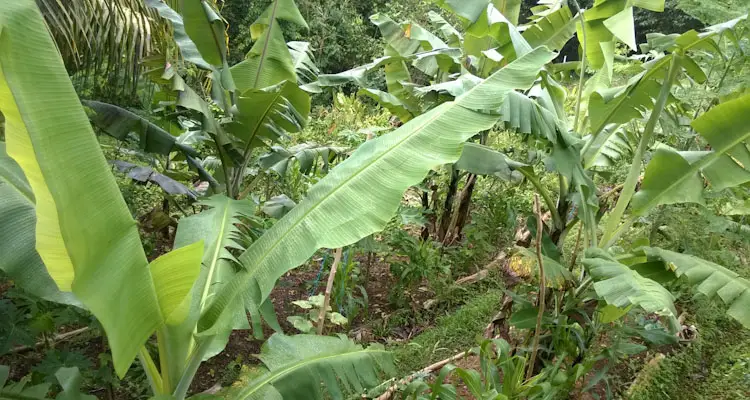
However, the method attempts to keep operational costs to a minimum. It removes the need for farmers to take large loans to conduct their business. These costs are offset by inter-planting short-term “cash crops” within the system, resulting in zero costs.
As the name suggests, ZBNF practitioners do not use agrochemical inputs. Instead, they use a combination of microorganism inoculants and botanical extracts prepared from local ingredients. They also avoid practices such as vermicomposting, which can introduce alien creatures into the ecosystem.
Who Introduced Zero Budget Natural Farming?
Zero Budget Natural Farming draws from the farming practices of tribal people of India. It builds on extensive research and observation, spanning almost two decades.
Mr. Subhash Palekar, an Agricultural Scientist from Maharashtra, India, introduced Zero Budget Natural Farming to the general public. It results from over twenty years of research into indigenous forestry practices and ecosystems, followed by multiple research projects conducted on his Agroforestry farm, spanning 1989 to 1995.
Mr. Palekar wrote multiple books about Zero Budget Natural Farming, later renamed Subhash Palekar’s Natural Farming. These books are available in various dialects and languages, including English, Hindi, and Marathi.
What Are The Four Pillars Of Natural Farming?
Subhash Palekar’s Natural Farming method aims to provide smaller farmers with a simple, practical system that relies on locally-sourced materials and traditional practices.
The system is based on four guiding principles, often referred to as the 4 Pillars of Zero Budget Natural Farming. These pillars are as follows:
1. Jivamrita: Microorganism Solution
Jeevamrutha is a nutrient-rich microorganism solution that combines fresh cow manure, stale cow urine, pulse flour, soil, and water. It works as either a soil dressing or diluted as a foliar spray, providing microorganisms to the earth and natural fertilizer to the plant. The JBNF system requires regular applications of Jivamrita for about 3 years until it becomes self-sufficient.
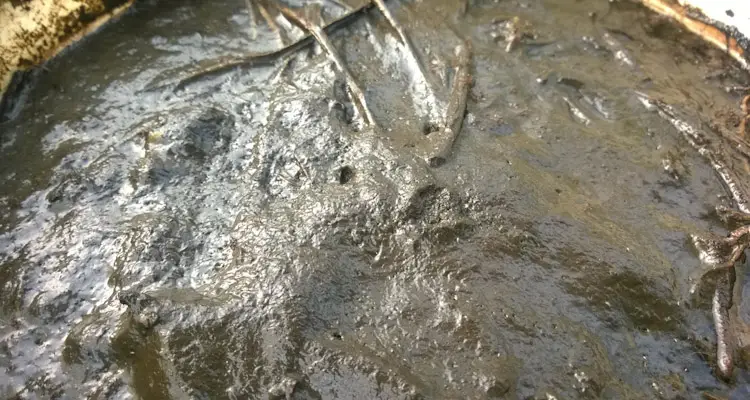
2. Bijamrita: Seed Treatment
Beejamrutha is a seed treatment intended to protect planting materials from pest and disease-causing organisms. It is a mixture of neem, tobacco, and green peppers, all of which have anti-fungal and antibacterial properties. This treatment is necessary since ZBNF emphasizes using indigenous seeds and plants, which are generally untreated.
3. Acchadana: Mulching
Mulching protects the soil from excess evaporation, provides suitable habitat for organisms and lessens soil erosion. It plays an integral part in Natural Farming systems which use three types of mulching; soil, organic material, and intercropped plants. As a result, plowing is unnecessary once the system is set up.
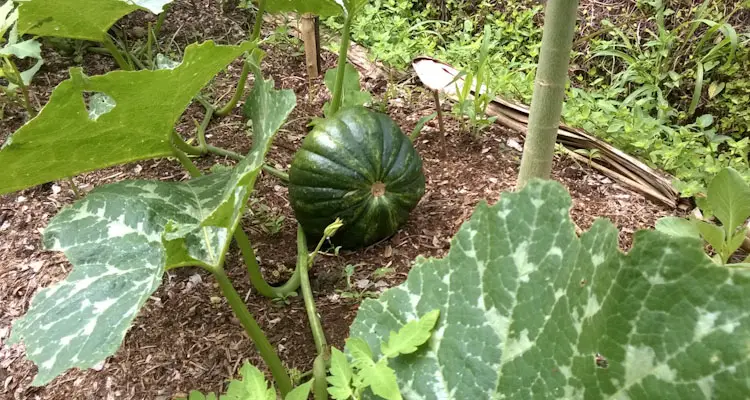
4. Whapasa: Moisture
ZBNF practitioners seek to create a soil condition where the soil has a balance of water and air. This balance provides plant roots with ideal conditions to thrive, reducing the possibility of soil-borne diseases.
Mr. Palekar emphasizes that soil should be moist but not wet. He encourages farmers to avoid unnecessary irrigation. In some instances, ZBNF practitioners water plants around midday to allow evaporation of excess water.
As you may have noticed, these principles are similar to other natural farming systems such as JADAM Organic Farming and Korean Natural Farming. The main difference seems to be the material used to produce the results.i
Difference Between Organic Farming And Zero Budget Natural Farming
The most significant differences between Organic farming and Zero Budget Natural Farming are the operation cost and the methods used to achieve their goals.
Organic farming allows practitioners to use various “certified” inputs, including safe chemicals and extracts. These organic inputs are usually expensive, making them unfeasible for small farmers. On the contrary, Zero Budget Natural Farming uses local materials to create the necessary soil amendments with minimal operational costs.
Both systems encourage mulching and organic material but differ on what they consider acceptable. For example, vermicompost is a popular soil amendment among organic farmers but is discouraged in ZBNF.
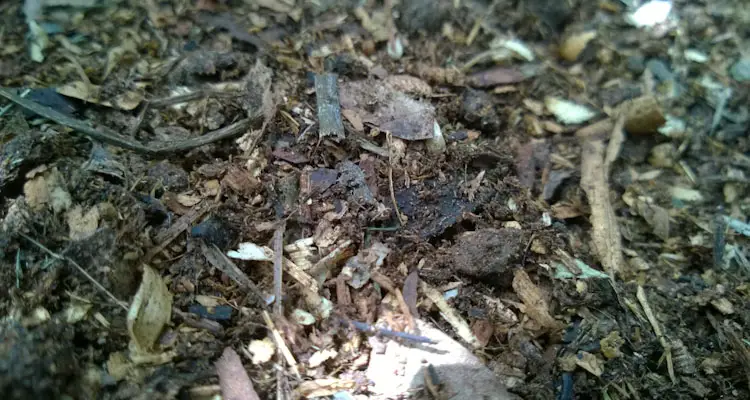
It is common to see large monoculture Organic Farming operations. In contrast, Zero Budget Natural Farming is rooted in diverse agroforestry practices, resulting in forest-like systems. This also lends to the diversity of the harvest collected from the different methods.
While, in essence, both Organic Farming and Zero Budget Natural Farming aim to provide healthy food with minimal impact on the environment, they differ considerably in acceptable practices.
What Are The Advantages Of Zero Budget Natural Farming?
Mr. Subhash Palekar developed the Zero Budget Natural Farming in response to financial and psychological challenges faced by small farmers. As a result, most of the advantages were incorporated into its fundamental design. Some of these advantages include:
Lower Operational Cost
ZBNF makes use of local materials and Agroforestry practices. These minimize the farmers’ overall running cost, allowing them to recoup their money when they sell the intercropped cash crops.
While this does not remove cost altogether, it helps the farmer avoid unnecessary debt and mental stress that usually accompanies engaging in conventional agriculture.
Less Water Required
Subhash Palekar’s Natural Farming practitioners claim that they use about 10% of the water compared to their previous systems. This is significant, especially in regions prone to droughts and other forms of water shortages.
While this number is mind-blowing, it must be noted that most of these estimates are not backed scientifically.
Regardless of the exact percentage, it is safe to conclude that ZBNF uses less water than other commercial systems.
Improvement In Solid Structure and Fertility
The underlying aim of Mr. Palekar’s method seems to be improving the soil food web, resulting in an improved soil structure.
This goal is evident by adding microorganism solutions, limited tillage, and mulching. These practices encourage the development of healthy living soil capable of sustaining the 5 Layer Food Forest growing above.
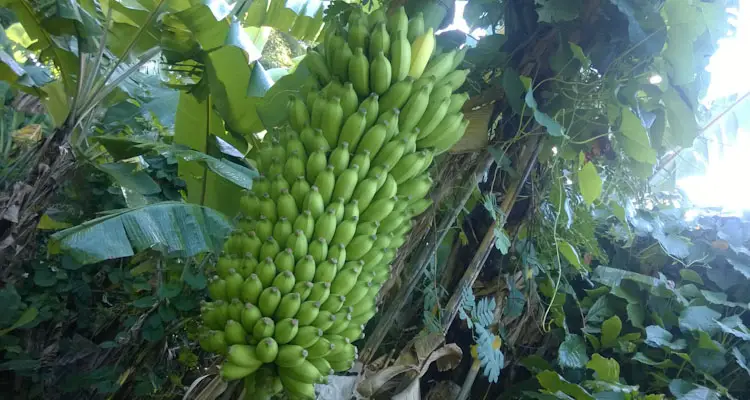
These inherent characteristics have allowed Subhash Palekar’s Natural Farming system to spread throughout India, where many farmers follow the techniques.
What Are The Disadvantages Of Zero Budget Natural Farming?
While ZBNF is a unique, practical system, it has minor drawbacks. Most of these do not affect its intended market but possibly restrict its adaptation in other regions. Some of these disadvantages include:
Level Of Exclusivity
ZBNF was developed in India in response to the challenges faced by Indian farmers. As a result, it focuses on using materials widely available in their culture.
For example, cattle dung, urine, and pulse flour can easily be obtained in most parts of India. However, it can be pretty expensive internationally.
This does not negate the system’s effectiveness but is a possible reason for Subhash Palekar’s Natural Farming rebranding.
Limited Translations
As mentioned before, ZBNF primarily caters to the needs of Indian farmers. As a result, most of the literature is available in various languages spoken within the country.
Gradually, more English translations are being made available to persons worldwide.
Practitioners of ZBNF are also encouraged to learn English and use other natural farming techniques.
Lacks Clear Scientific Approaches
Mr. Palekar spent many years developing expediting and developing his Zero Budget Natural Farming systems. His core principles are practical.
However, there seems to be a lack of conclusive scientific data to explain his results, common to natural farming systems. For example, tests such as microbiological analysis of the soil would aid in proving the effectiveness of Jeevamrutha, one of the pillars of ZBNF.
While these tests and analyses would give scientific backing to the process, they would serve as expensive proof of what millions of practitioners already know.
Note: Personally, it was challenging to get complete information about ZBNF in 2018. As a result, I had to take bits and pieces and then merge them with similar systems on our farm. I am pleased to see more information available online.
How To Start Zero Budget Natural Farming
The simplest way to get started with Zero Budget Natural Farming is to gather as much information as possible about the system and then assess whether you have the required resources.
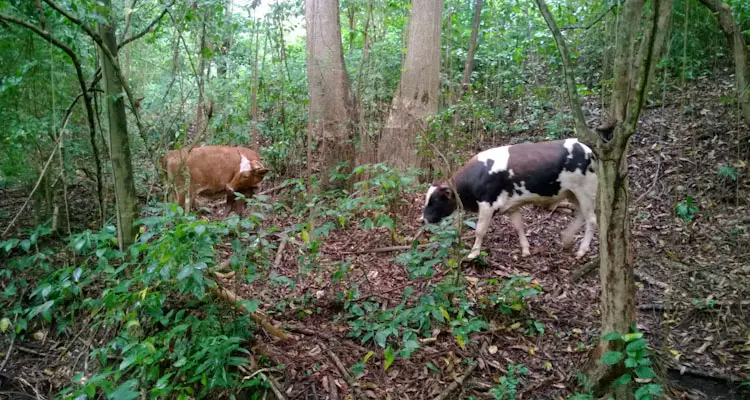
One of the most important considerations would be to get a source of cow manure and urine. The excreta obtain from cattle is full of microorganisms present in the cow’s stomach. These microbes assist with the breakdown of organic matter and serve as a beneficial addition to the soil.
You will also have to consider your available space. While the 5 Layer Model can be scaled to fit small plots of land, it is intended for commercial use. It needs a relatively large area to be profitable.
Subhash Palekar’s Model focuses on indigenous plants, resulting in a tropical food forest. While adopting this system to temperate regions might be possible, it will take additional research and experimentation.
After considering these points, it would be beneficial to get hands-on training with a practitioner of the ZBNF system. I would like to say just reading the information in a book would be enough. However, from my experience, nothing beats apprenticeship in this particular system.
Can We Use Bio Fertilizer In Zero Budget Natural Farming?
Zero Budget Natural Farming emphasizes locally sourced soil amendments and planting materials. It discourages the use of external inputs, even those classified as organic.
In short, we can use bio-fertilizers in Zero Budget Natural Farming, provided it is made on-site using locally-sourced ingredients. For example, Jeevamrutha is a widely used bio-fertilizer and is regarded as one of the pillars of ZBNF.
The same principle applies to Beejamrutha, the Botanical Extracts used in Zero Budget Farming. This measure is necessary to prevent farmers from going into unnecessary debt to purchase agricultural inputs.
Pest Control In Zero Budget Natural Farming Systems
Initially, I did not encounter any distinct pest management practices apart from Beejamrutha. However, I realized that the entire system is designed to help protect itself against pests.
Zero Budget Natural Farming combines traditional practices and botanical extracts, creating an unfavorable environment for pests. The 5 Layer Farming Model encourages diversity in the system while ensuring enough light and airflow. While botanical extracts such as Bijamrita serve as repellents and pesticides.
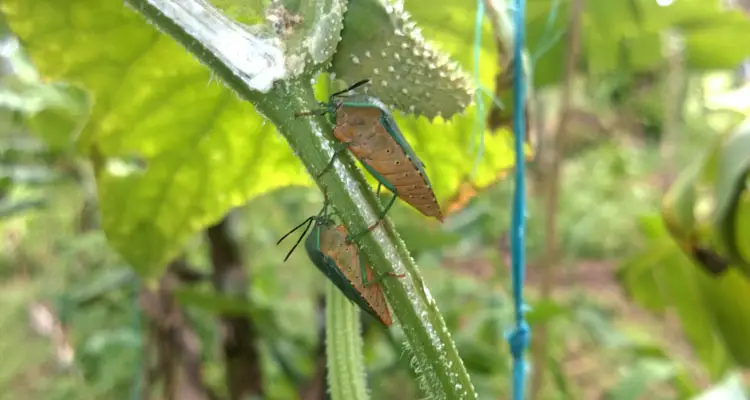
Farmers actively engage in experimenting and sharing formulations they find helpful. Most of these pesticides are made from neem and tobacco extracts mixtures.
However, practitioners are free to experiment with other local materials. Some of these may also include traditional attractants and repellents. This also means that the effectiveness of these concoctions is unverified.
Final Thoughts
Zero Budget Natural Farming proved to be a profitable system for many farmers across India. The system is simple, easy to follow, and uses materials that are accessible to average farmers.
The benefits of the ZBNF system make it attractive to anyone seeking to venture into natural farming. However, the research related to the system seems limited to a tropical climate, making it more applicable to similar regions.
While the inputs are appropriate for the initial culture, I would like to see more research on alternative agricultural inputs, such as those developed under different natural farming systems.
Related Questions
What are Cash Crops?
A cash crop is a plant grown mainly to sell rather than for use by the farmer. The exact plants may differ from country to country but generally include cocoa, cotton, rice, corn, vegetables, and fruits. Basically, it deals more with the intent than the actual crop.
What Is Pulse Flour?
Pulse flour is flour made from edible leguminous seeds, such as lentils, beans, and peas. They are generally coarser in texture and have higher protein and fiber levels than highly refined wheat flour. Unfortunately, it is not as easy to access in some parts of the world.
Do We Need Tillage In Zero Budget Natural Farming?
Mr. Sung discourages deep tillage in Zero Budget Natural Farming systems once established. While it is possible to till the top layer, this practice has the potential to disrupt soil structure and general soil life. Instead, mulching is recommended to keep the soil moist and structure intact.
What Are The Objectives Of Zero Budget Natural Farming?
The main objective of Zero Budget Natural Farming was to relieve the financial burden placed on farmers due to the requirements of conventional agriculture practices. It was designed as a potential agriculture alternative but later developed into a socio-economic and environmental movement.
Can We Save Water In Zero Budget Natural Farming?
A well-established Zero Budget Natural Farming System can save 90% of the water generally used in a conventional system of equal size. This result is partly due to the use of mulch and enhanced microorganism activity in the soil.
References:
FAO. Zero Budget Natural Farming In India. fao.org. Accessed April 2022
The Hindu. What Is Zero Budget Natural Farming? thehindu.com. Accessed April 2022
PIB India. Zero Budget Natural Farming. pub.gov.in. Accessed April 2022
India Filings. Zero Budget Natural Farming. indiafilings.com. Accessed April 2022
Sanctuary Nature Foundation. How to fix our broken food system and stop its collateral damage to Nature. sanctuarynaturefoundation.org. Accessed April 2022

